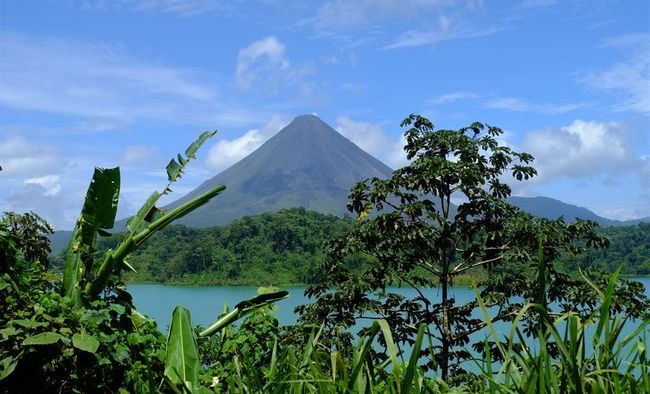
Pura Vida Ines und Matthias in Costa Rica
vakantio.de/pura-vida-ines-und-matthias-in-costa-rica
From coffee to cocoa
Diterbitkan: 04.11.2019
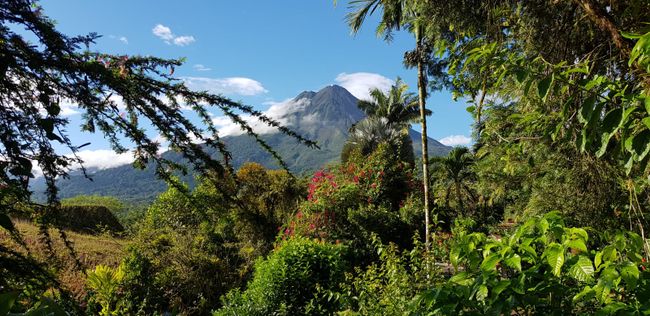
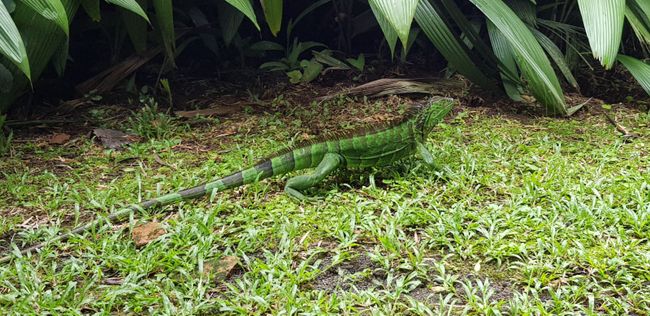
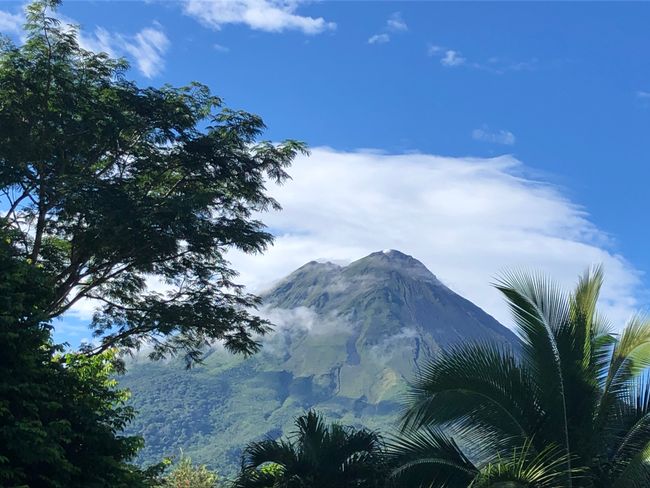
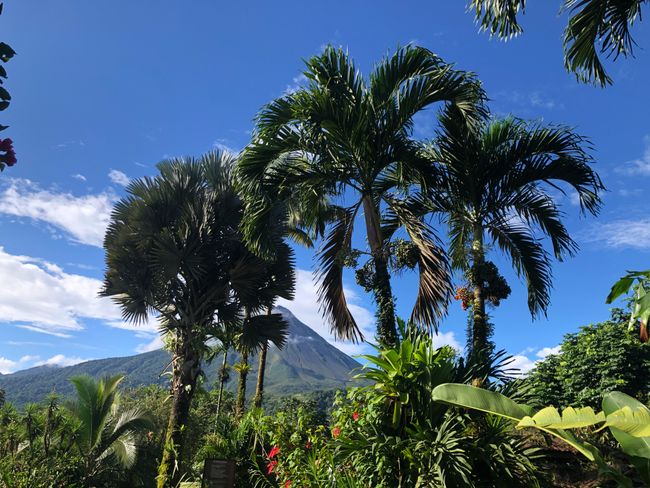
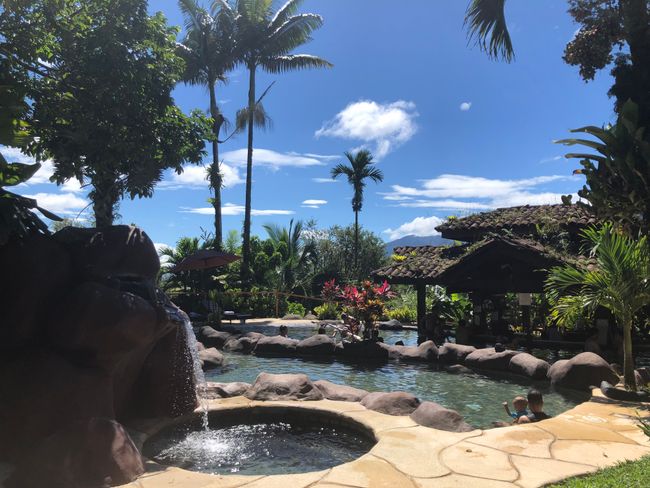
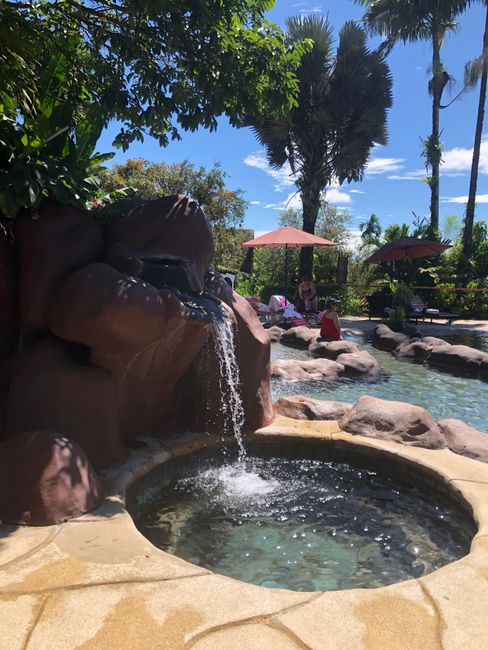
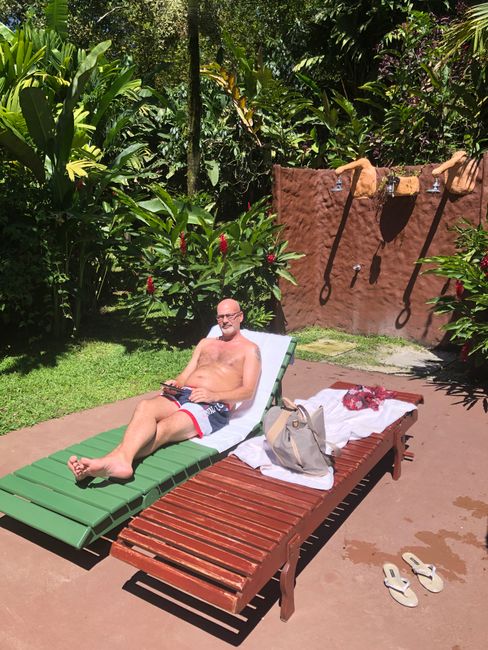
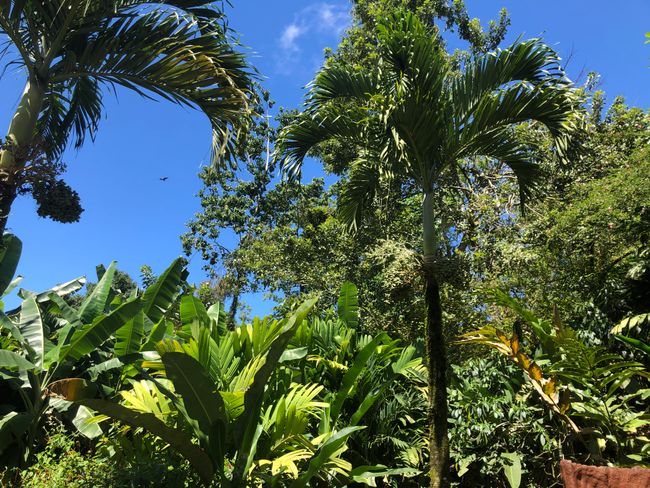
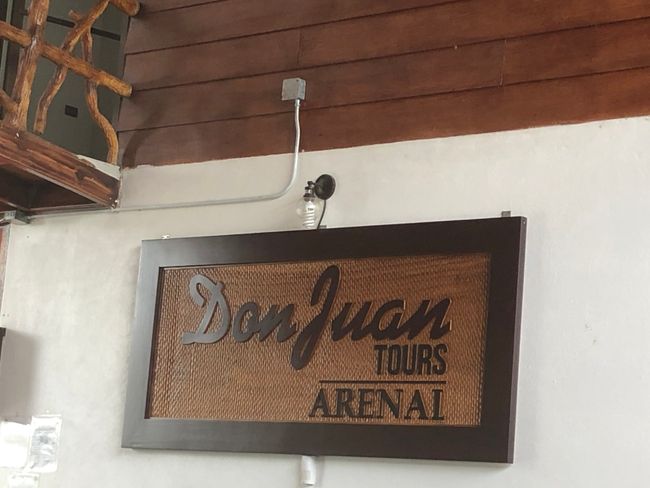
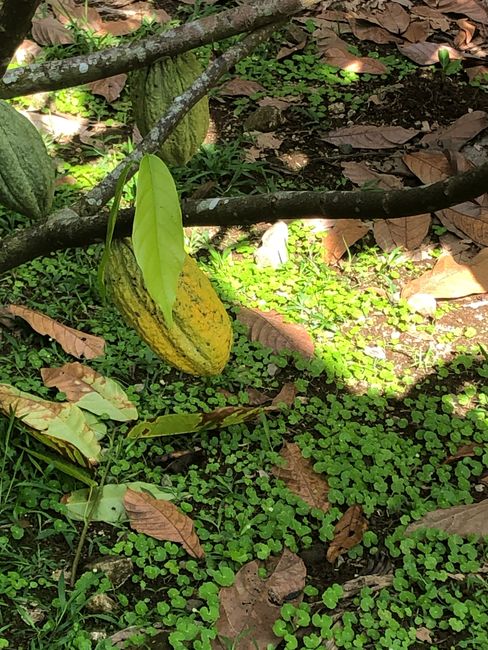
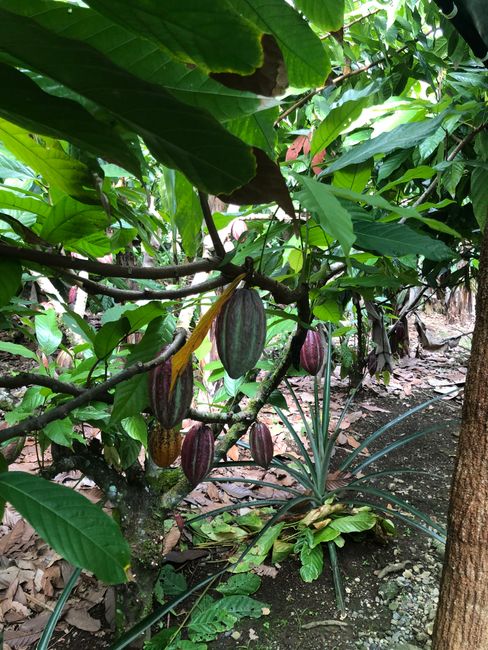
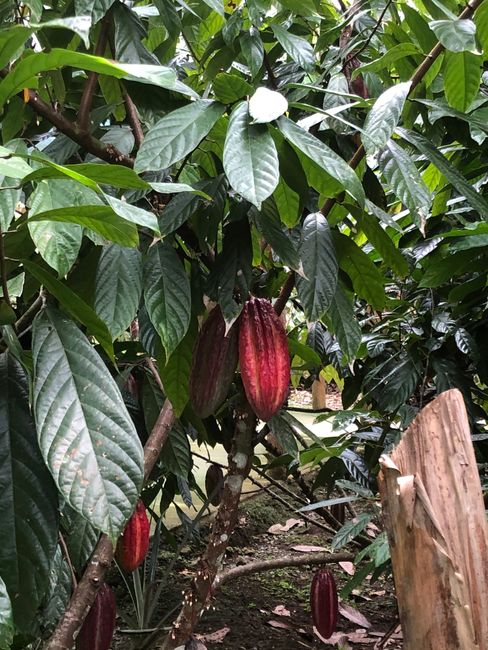
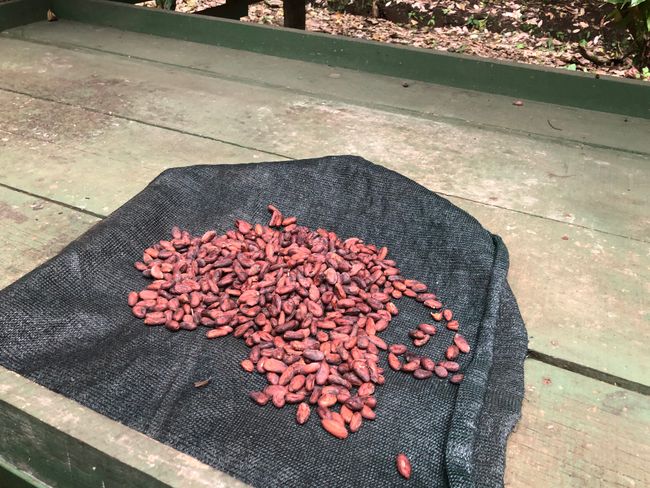
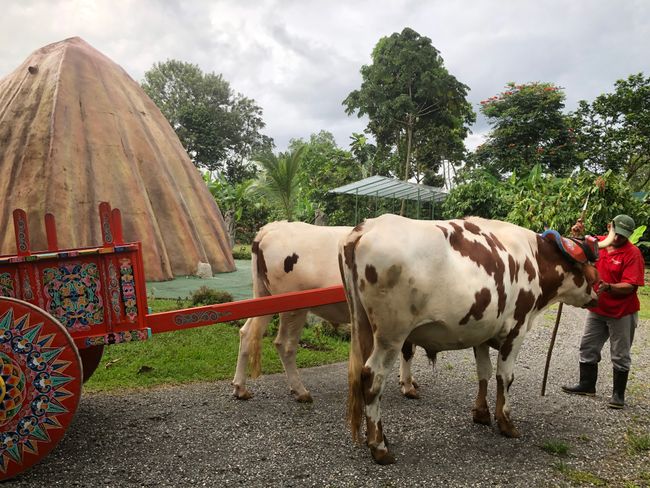
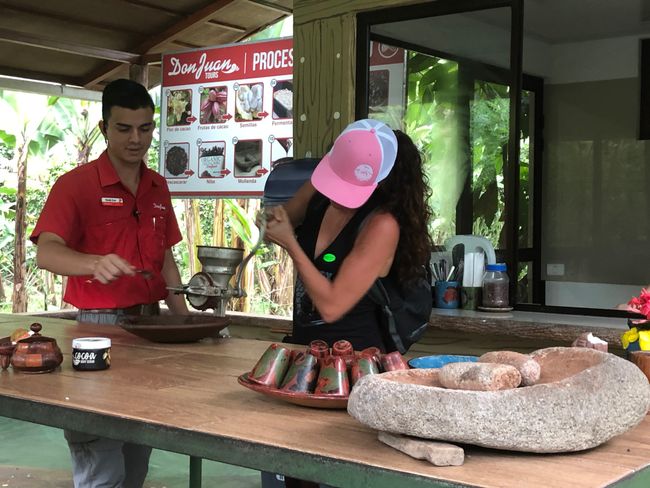
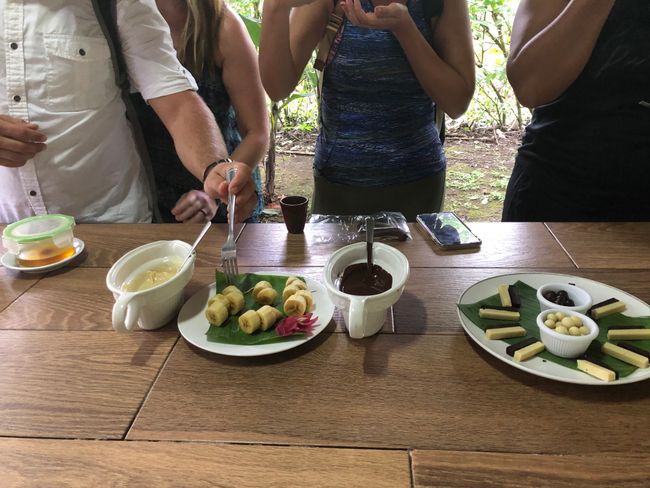
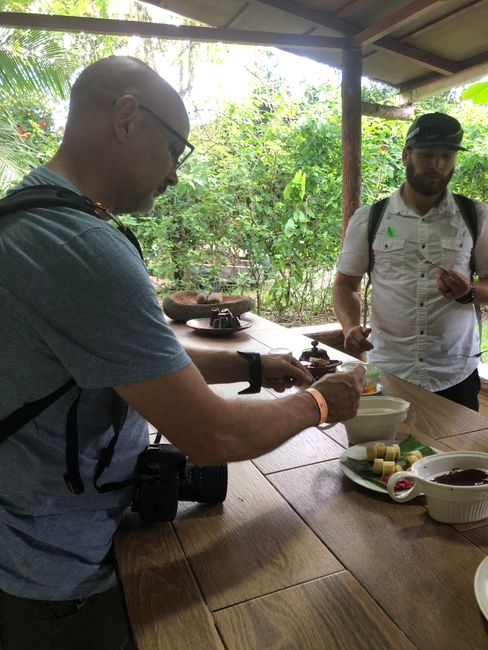
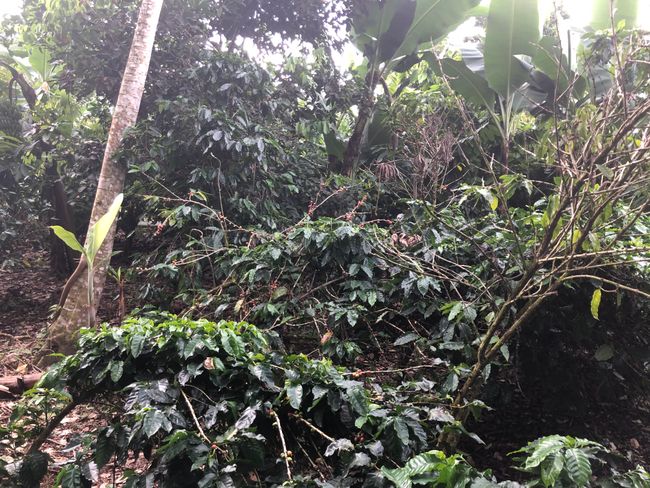
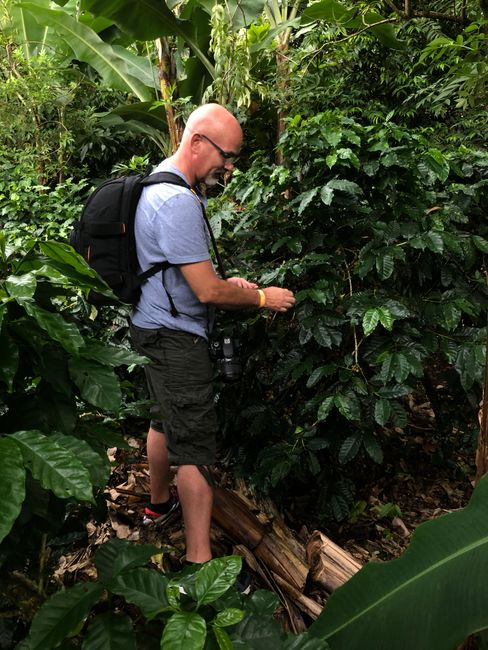
Berlangganan Newsletter
Inh
After a short night, thanks to jet lag, we start the first day in our hotel in a relaxed manner.
After a heavy rain shower in the morning, the clouds clear up and we have a fantastic view of the Arenal Volcano, the youngest volcano in Costa Rica, which last erupted in 1968. The lush green offers the perfect contrast to the barren volcano crater.
In the morning, we enjoy the pool with a cocktail at the pool bar and a dip in the warm thermal water. The sun is incredibly hot. Even in the shade, you start to sweat.
In the afternoon, we start our tour to the Don Juan Farm.
We receive an excellent lesson on coffee and cocoa.
Coffee is not grown in La Fortuna, as coffee needs a higher altitude to ripen. However, cocoa thrives here. Our guide, a funny guy, tells us about the cultivation and production of cocoa. The Maya already made a drink from the cocoa bean, to which they added various spices. The Europeans brought cocoa to Europe, where the Swiss and Dutch developed chocolate production. But cocoa beans are not only used for making cocoa, the cosmetics industry is also interested in cocoa. Cocoa butter is used to make cosmetics. At the end of the tour, we get involved. We are allowed to make our own chocolate. The cocoa beans are ground and an oily paste is formed, which we now mix with different flavors. Palm sugar, cayenne pepper, cinnamon, milk powder. Everyone creates their own chocolate according to their preferences. My chocolate tastes somehow strange. Well, no one is born a master.
Now it continues, we are initiated into the secrets of coffee production. There are three different coffee plants, Arabica, Liberica, and Canephora.
While Liberica and Canephora are not of very good quality, Arabica is the star among the coffee plants.
Originally, the plant comes from Ethiopia from the Kaffa region. Coffee roasting was invented in Yemen, on the Arabian Peninsula. Hence the name Arabica.
We gain insights into cultivation and the manufacturing process, Matthias tries his hand at coffee picking, and in the end, some myths about coffee are debunked.
For example, it doesn't matter at all which coffee bean you use to make coffee, each one has exactly the same caffeine content. An espresso does not make us more awake than a regular cup of coffee.
The most important thing is to prepare your coffee with water that is not hotter than 93 degrees.
Naturally, there is a taste of the coffee and of course, we also buy a pack of Costa Rican coffee.
Tomorrow, the next adventure awaits us. We are going to Los Chiles, a small town on the border with Nicaragua. From here, we start our wildlife observation on the Cano Negro River. I would really love to see sloths. Hopefully, my wish will come true.
old
Berlangganan Newsletter
Menjawab
